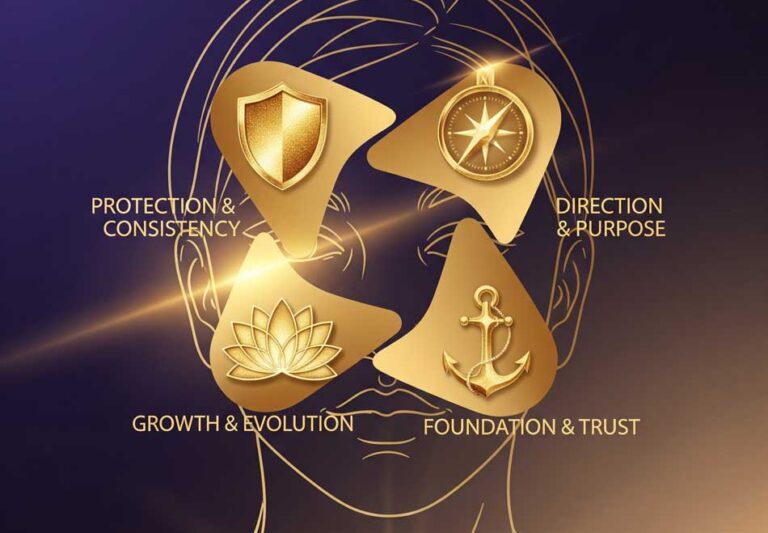How to Professionally Build Your Personal Brand After Self-Discovery?
In today’s world, a personal brand is considered one of the most valuable professional assets. Many experts, entrepreneurs, and even artists start their journey to success by deciding to present themselves as a brand. But personal branding goes far beyond just a name or a logo. The identity elements of a personal brand form its backbone — giving it character, setting it apart, and creating an emotional connection with the audience.
This article focuses on one of the most important stages in personal branding: designing brand identity elements. This stage comes after self-discovery and lays the foundation for your presence in both digital and real-life environments.
Personal Branding Process: Starting an Influential Journey
1. Choosing a Personal Brand Name
Your brand name is the first touchpoint for your audience. It should be simple, memorable, and preferably unique. In many cases, people use their real names—especially if they’re already known or want to convey authenticity. However, creative combinations of names, expertise, or professional pseudonyms can also be very effective.
Key tips for choosing a personal brand name:
-
Avoid complexity: Choose a name that’s easy to search online and has a simple spelling.
-
Platform consistency: Check if your chosen name is available on social media and as a domain.
-
Reflect your field: Including your area of expertise can build clarity and trust.
Ultimately, the name should align with your inner identity while allowing room for future growth.
2. Defining Your Brand’s Tone of Voice
Your tone of voice expresses your brand’s personality through words. It must align with your target audience, industry, and overall goals. Think of your brand as a person: Does it speak formally? Is it inspirational? Friendly and humorous? Or technical and precise?
Four common tone categories:
-
Formal and serious: Suitable for doctors, lawyers, legal advisors, and executive professionals.
-
Inspirational and motivational: Great for personal development coaches, speakers, and transformational consultants.
-
Friendly and casual: Perfect for social media influencers, artists, or public educators.
-
Technical and academic: Ideal for technical experts, researchers, or academic professionals.
Maintain a consistent tone across all communication channels—from emails to Instagram captions and website copy. A tone guide can be helpful for you and your team over time.
3. Designing Visual Identity: Logo, Colors, Typography & Graphic Templates
Your visual identity is the face of your personal brand. Even if your work is content-focused rather than visual, people first perceive you with their eyes. Therefore, visual consistency is crucial.
A. Logo
A personal brand logo doesn’t need to be complex. A simple digital signature or stylized initials can be just as effective.
A good logo should be:
-
Simple and minimal
-
Scalable (usable across sizes from business cards to websites)
-
Reflective of your personality or profession
B. Brand Colors
Every color communicates something.
-
Blue suggests trust and professionalism
-
Green signals balance and wellness
-
Red conveys energy and boldness
-
Purple evokes creativity and originality
Typically, one primary color and 2–3 accent colors are used. They should be consistent across your website, social media posts, slides, business cards, and more.
C. Typography
Using a consistent and appropriate font helps create cohesion. The font should reflect your tone:
-
Modern fonts for tech brands
-
Handwritten fonts for artistic or creative brands
-
Classic fonts for more formal professions
D. Graphic Templates
Having branded templates for Instagram posts, slides, email headers, and business cards helps make your brand look professional, serious, and memorable.
4. Maintaining Consistency Across Platforms
A common personal branding mistake is lack of consistency across channels. Your website might look professional, but your Instagram could feel completely different. Brand consistency ensures that people experience the same essence of you, no matter the platform.
To ensure consistency:
-
Use the same profile photo and bio on all platforms.
-
Keep colors, logos, and fonts consistent.
-
Don’t shift tone even if the content type changes (video, photo, text).
-
Repeat your core brand message regularly.
Conclusion
Building a personal brand is a step-by-step process that should follow self-discovery and be carefully designed with clear intentions. Choosing the right name, defining your tone of voice, crafting a visual identity, and maintaining consistency form the four pillars of this journey.
With rising competition in the digital space, your personal brand must be authentic and well-communicated to stand out. Remember, a brand is not created overnight. It’s a journey of growth, adjustment, and refinement.
The key is to begin — with authenticity, awareness, and consistency.


